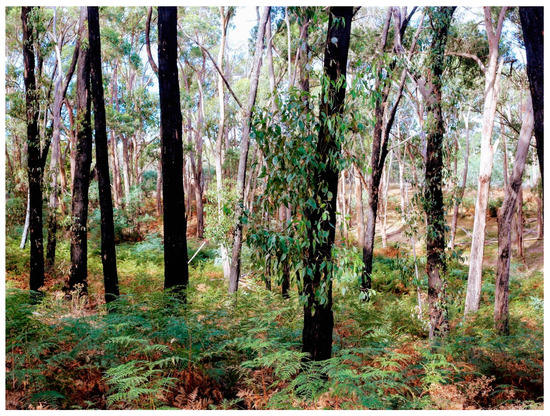by Samuel Hislop 1,2,3,*,Simon Jones 1,Mariela Soto-Berelov 1,Andrew Skidmore 2,4OrcID,Andrew Haywood 5OrcID andTrung H. Nguyen 1,3
This paper presents a straight-forward method for comparing the merits of various spectral indices by considering all of the pixels as a single distribution. In this research, we made use of existing reference data to select our candidate pixels, but the method itself does not rely on detailed reference data. The main advantage in using these particular pixels was that they had been systematically sampled, based on plots stratified by bioregion and forest tenure. Thus, they are an accurate reflection of the entire forest estate in the study area. However, by considering all of the pixels as equal participants to a single distribution, detailed information in individual pixels may be lost. Nonetheless, the purpose of the exercise was not to derive detailed information about forest dynamics, but to determine which indices may be best suited for this task. Of the indices that were tested, we consider NBR as the most reliable index for tracking fire disturbance and recovery in sclerophyll forests, due to its consistently high performance across the range of tests performed.
https://www.mdpi.com/2072-4292/10/3/460/htm
Monday, November 18, 2019
Sunday, November 17, 2019
The Fires Last Time
Tenement fires in New York in the 60s and 70s were a special terror on top of a general horror show. When your or your neighbors’ home burns in the tight quarters of the city it consumes your psyche, not just your belongings, and, even if just briefly, you are on the street. It happened on the Lower East Aide, in Harlem and elsewhere in the boroughs, as landlord neglect set in, as housing got crowded and as old tenement infrastructure decayed. Over time, the flames raged most drastically in the South Bronx. That is the back drop for a 2010 book that looks at this plague era, with a special eye toward the role a think tank’s overhyped computerized statistical analysis played in fanning the flames. Joe Flood’s “The Fires” (Broadly subtitled, “How a computer formulas, big ideas and the best of intentions burned down New York City and determined he future of cities.”) has particular portent in this age, when big data algorithms are a prowling wolf.
The Fires - Amazon.com
The Fires - Amazon.com
Monday, November 4, 2019
Subscribe to:
Posts (Atom)

